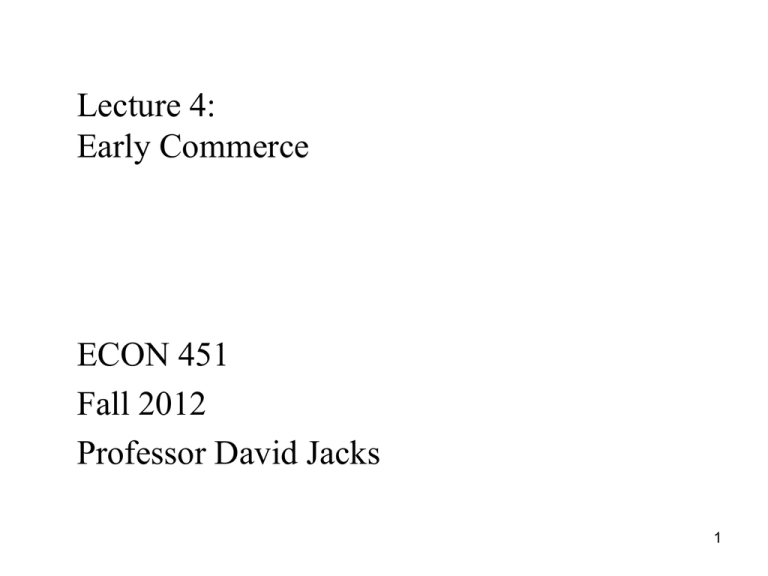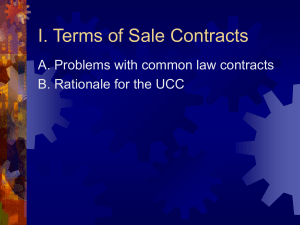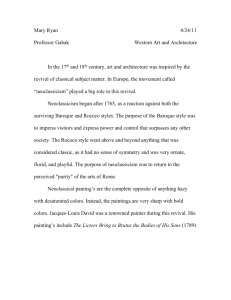Lecture 4: Early Commerce ECON 451 Fall 2012
advertisement

Lecture 4: Early Commerce ECON 451 Fall 2012 Professor David Jacks 1 The main issue we will be exploring is what explains the resurrection of domestic and international trade in the medieval period. The implicit issue being what role does this have in long-run European economic growth. Background: where we left off last week… Rome. Introduction 2 Remember that the Roman Empire reached its peak from the late 1st Century to the early 3rd Century (roughly 90-215 AD). And that one of the most important aspects of the Roman economy was the degree of specialization and trade it was able to achieve. The Roman Economy Redux 3 And the fall of Rome produced extreme political fragmentation. This resulted in: 1.) The creation of personal fiefdoms (involution and “keeping them on the farm”). 2.) The Roman Economy Redux 4 This is where we pick up the story… Standard economic theory would probably stop at considering the political and (maybe) physical barriers to trade. But there are some elements to be resolved: 1.) How does trade come about (or more precisely, come about again)? The Revival of Trade 5 To most economists, the personal gains from trade would be enough to propel interested parties to engage in quid pro quo behavior. In one of the most influential narratives of this time, North and Thomas’ (1971) argue along these lines: medieval population growth→migration→ differing factor endowments→ specialization→“trade was created”. The Revival of Trade 6 But the real world does not work quite so smoothly and automatically because time elapses between the quid and the quo. And this a world of slow transport and communication. Basically unchanged speeds of travel/ since Rome, roughly 35 kilometers per day at best E.g., Genoa to London, a route of roughly 2100 kilometers by sea, thus, roughly 60 days at sea. The Revival of Trade 7 Begs the question of how long-distance trade could emerge and be sustained in the face of: 1.) Uncertainty over the actual arrival and time of transit for itinerant merchants (opportunity costs, profits, and price differentials) The Revival of Trade 8 This condition is the fundamental problem of exchange. Individuals enter into mutually beneficial relationships: 1.) only if they recognize them as such The Revival of Trade 9 Notice this implies a few critical elements: 1.) Information (but not necessarily perfect) about the potential gains from trade and/or market conditions. 2.) The Revival of Trade 10 Again, think about Europe in 1000 AD: 1.) Poor communication→limited information. 2.) Domestically, lack of strong governments to enforce contractual obligations. 3.) Internationally, things appear even worse; The Revival of Trade 11 At the same time, trade did emerge again, and we are left with the question of how information flowed and incentives were formed. So, we will be looking at institutions that governed the relations between: 1.) merchants and overseas agents (coalitions) 2.) foreign rulers and overseas merchants (merchant guilds) 3.) among merchants (Law Merchant) The Revival of Trade 12 What coalitions, guilds, and the Law Merchant have in common is that they are all examples of private-order institutions. These are a set of constraints of rules for interaction which individuals adopt to foster “order”. The Revival of Trade 13 Law Merchant was simply a body of rules laid down by merchants themselves to regulate their dealings with one another. Critically, it was an adaptive institution so that these rules could change in nature and increase in number, allowing the concept of precedence to guide this evolution. Basis of most commercial law in present-day Europe and North America. Law Merchant 14 Origins mainly stem from (or at least coincide) with the heyday of the Champagne fairs in the 12th/13th century. Champagne fairs were a circuit of six mercantile fairs held roughly every two months. The fairs acted as a central market for goods and gave rise to sample trade. Law Merchant 15 Law Merchant 16 The fairs also acted as a multi-lateral payments clearing house. Simple example of multi-lateral payments: I owe Robbie $1000. Robbie owes Danny $750. Danny owes me $1250. Individual payments total $3000. Law Merchant 17 This conservation of cash amounted to an expansion of credit. This expansion of credit in turn lead to: 1.) higher volumes of trade 2.) development of new financial instruments Law Merchant 18



